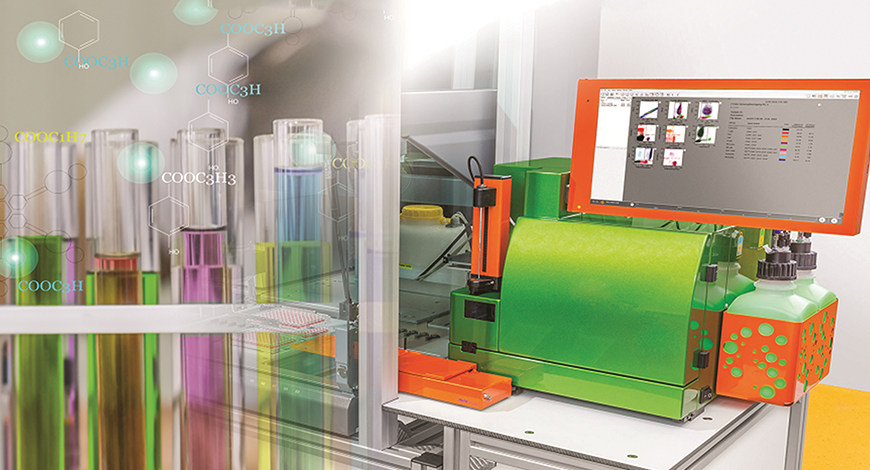Trends
Flow cytometers market to hit USD 6330.8 million by 2029

The global flow cytometers market size was valued at USD 3550.5 million in 2022 and is forecast to a readjusted size of USD 6330.8 million by 2029 with a CAGR of 8.6% during review period. The global flow cytometers market continues to exhibit robust growth driven by advancements in technology, increasing applications in research and clinical diagnostics, and rising demand for personalized medicine. According to the latest research report, the market is poised for significant expansion over the forecast period, with notable contributions from key players, evolving market segmentation, and regional dynamics.
Market overview:
Flow cytometers, sophisticated instruments used for analyzing characteristics of cells and particles, have become indispensable tools across various fields including immunology, hematology, oncology, and stem cell research. These instruments enable researchers and clinicians to study complex cellular processes, identify biomarkers, and diagnose diseases with unparalleled precision and efficiency.
US is the largest Flow Cytometers market with about 70% market share. Europe is follower, accounting for about 15% market share.
US market:
The United States remains a lucrative market for flow cytometers, driven by robust research infrastructure, significant investments in biotechnology and pharmaceutical industries, and increasing adoption of advanced healthcare technologies. The presence of major market players and a favorable regulatory environment further contribute to market growth in the region.
EUROPE market:
Europe represents another significant market for flow cytometers, characterized by high healthcare expenditure, strong emphasis on research and development, and increasing prevalence of chronic diseases. Countries like Germany, the UK, and France are at the forefront of market expansion, supported by growing government initiatives and funding for life sciences research.
APAC market:
The Asia-Pacific region is witnessing rapid growth in the flow cytometers market attributed to expanding biotechnology and pharmaceutical sectors, rising healthcare expenditure, and increasing focus on personalized medicine. Emerging economies such as China, India, and Japan are key contributors to market growth, fueled by investments in healthcare infrastructure and research capabilities.
Middle-east market:
The Middle-East region presents untapped opportunities for flow cytometer manufacturers, driven by escalating demand for advanced diagnostic technologies, growing prevalence of infectious diseases, and rising investments in healthcare infrastructure. Collaborations with local distributors and healthcare providers are essential for market penetration in this region.
Market strengths:
The flow cytometers market benefits from its ability to provide rapid and accurate analysis of cellular characteristics, thereby facilitating early disease detection, personalized medicine, and drug discovery. Continuous technological advancements such as multiparameter analysis and high-throughput screening further enhance market competitiveness.
Market weaknesses:
Despite significant advancements, flow cytometry still faces challenges related to high instrument costs, complex data analysis, and limited accessibility in resource-constrained settings. Moreover, the requirement for skilled personnel and concerns regarding standardization pose additional hurdles to market growth.
Market opportunities:
The integration of artificial intelligence and machine learning algorithms into flow cytometry platforms presents promising opportunities for automating data analysis, improving workflow efficiency, and enhancing diagnostic accuracy. Furthermore, the expansion of applications beyond traditional research fields into areas like microbiology and environmental monitoring opens new avenues for market expansion.
Market threats:
Intense competition, regulatory hurdles, and the emergence of alternative technologies pose potential threats to the flow cytometers market. Additionally, economic uncertainties, such as the impact of global pandemics, can disrupt market dynamics and delay capital investments in healthcare infrastructure and research.
Market past performance:
Historically, the flow cytometers market has exhibited steady growth driven by increasing adoption in research laboratories, academic institutions, and clinical settings. Technological advancements, strategic collaborations, and growing awareness about the benefits of flow cytometry have contributed to market expansion over the years.
Market forecast:
The global flow cytometers market is projected to witness substantial growth in the coming years, propelled by rising demand for personalized medicine, expanding applications in clinical diagnostics, and growing investments in life sciences research.
Market research and development:
Continuous investments in research and development are essential for driving innovation and sustaining competitiveness in the flow cytometers market. Key areas of focus include developing novel reagents and assays, enhancing instrument performance, and exploring new applications in emerging fields such as single-cell analysis and spatial profiling.
Market pestel analysis:
A comprehensive PESTEL analysis reveals various factors influencing the flow cytometers market, including political stability, economic trends, technological advancements, environmental regulations, and socio-cultural factors. Understanding these external factors is crucial for devising effective market strategies and mitigating potential risks.
Market Sipoc analysis:
A SIPOC (Suppliers, Inputs, Process, Outputs, Customers) analysis provides insights into the flow cytometers market ecosystem, identifying key stakeholders, critical inputs, core processes, desired outputs, and end customers. This holistic perspective enables market players to optimize their operations, enhance customer satisfaction, and drive sustainable growth.
Conclusion:
In conclusion, the global flow cytometers market presents lucrative opportunities for industry players amidst evolving technological landscapes, expanding applications, and growing demand for advanced healthcare solutions. Strategic collaborations, continuous innovation, and market diversification are essential for capitalizing on emerging trends and sustaining long-term growth in this dynamic market. Quants and Trends:














